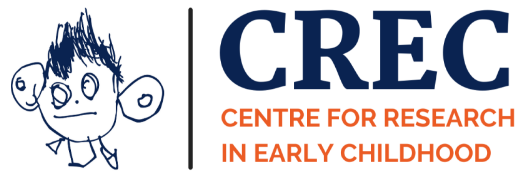Challenging normative understandings of participation and sense of belonging in multilingual early years education and care
It is every child’s right to ‘active participation in the community’ (UNCRC, article 23 of the UNCRC 1989). Every single day in my work as an Early Years Practitioner in a 3-6 years Montessori School in Geneva, I am blown away by the powerful and awe inspiring microcosm of cohesion and community. I marvel at how it is achieved in a single class school (of 24 children and 4 adults), where 13 different nationalities and 12 different spoken languages mingle.
In the UK too, numbers of children who use English as an additional language (EAL) are on the increase (DfE, 2023). With regard to the written word, Grenier and Vollans (2022) ask what we are missing when we push for very young children to hone and perfect this skill. Surely there must be a trade off? In our haste, surely something risks being lost in terms of vocabulary, listening and speaking. I agree. In equal measure, might so too there be loss incurred along the way because we are paying too little heed to the, ‘complexities and integrity’ (Viruru, 2001:39) of the other kinds of communication being used. In a culture where hegemony of the spoken language prevails (and I am not undermining the importance of this), children are finding their own ways to communicate, at the their own pace. So I wonder what risks being lost as a consequence of this?
My BECERA presentation details how a mixed method single case study dips into the incredibly diverse and rich resource I had at my fingertips in the Montessori school where I worked. For many in our cohort, a common spoken language is not shared but a sense of ‘active participation’ is palpable. In my study I seek to understand children’s patterns and ways of participating through use of ‘spatial metaphor’ and visual mappings of centrality and peripherality (Bernstein, 2018:835). I choose the unlikely bedfellows of Sociometry and Ethnography through which to elicit child voice and nuance in mapping positionings. Words, numbers, and patterns overlap, interweave and merge. I foreground the visual in the communication of findings. As someone who studied fine art for my first degree, worked for many years in art galleries, and who sculpts still, I am pulled strongly and emotively towards the powerful forces of visual as a tool for communication. I see the arts very much as an untapped resource through which to mainline research findings back into practice.
For my study, I turned my gaze towards the peripheries of the group and to where those without a shared spoken language seem to reside. My focus is upon nonverbal communication in peer to peer interactions. In the Montessori prepared environment where my research takes place, opportunities for child initiated interactions are rich and plentiful. A child-led period of time termed the ‘work-cycle’ (usually 3 hours), crafted into each Montessori school day is largely free from adult intervention ensuring that the child is celebrated and protected as an active agent in which to direct and lead their own learning journey (Isaacs, 2012). To witness a Montessori work-cycle in action is a joyous thing to behold. It is here, in this very special affordance of time and space, where my fieldnotes begin to capture the extent of children’s participatory expertise. It is where I witness how, with dexterity and fluency (Rogoff et al., 2005: 34), children utilise the grammars of nonverbal communication through which to seek, negotiate and explore relationships, identity, meaning, commonality, difference, positioning and sense of belonging.
References
Bernstein, K. A. (2018) The Perks of Being Peripheral: English Learning and Participation in a Preschool Classroom Network of Practice, Tesol Quarterly, 52(4):798-844.
Grenier.J and Vollans. C (2023) Putting the EYFS Curriculum into Practice, (2022), SAGE Publications Ltd
Isaacs, B. (2012) Understanding the Montessori Approach: Early Years Education in Practice Routledge: Oxon.
Schools, pupils and their characteristics, Department for Education (DfE),
Available at: https://explore-education-statistics.service.gov.uk/find-statistics/school-pupils-and-their-characteristics (accessed 03/02/2024)
Rogoff, B. et al., (2005) Children's Development of Cultural Repertoires through Participation in Everyday Routines and Practices, In Grusec, J. and Hastings, P. eds. (2005) Handbook of Socialization, NY: Guilford:1-47.
Rogoff, B. (1990). Apprenticeship in thinking: cognitive development in social contexts. New York: Oxford University Press.
UNICEF UK. (1989). The United Nations convention on the rights of the child Available at: https://www.unicef.org.uk/what-we-do/un-convention-child-rights/
Viruru, R. (2001) Language as colonization: the case of early childhood education. Contemporary Issues in Early Childhood, 2(1):31-47.

